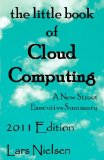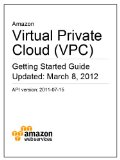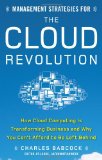Cloud Computing is the use of common software, functionality add-ins, or business applications from a remote server that is accessed via the Internet. Basically, the Internet is the “cloud” of applications and services that are available for access by subscribers utilising a modem from their computer. With Cloud Computing, one simply logs into desired computer applications – such as sales force or office automation programs, web services, data storage services, spam filtering, or even blog sites. Generally, access to such programs is by monthly or annual paid subscription. Through Cloud Computing, businesses may prevent financial waste, better track employee activities, and avert technological headaches such as computer viruses, system crashes, and loss of data.
Without Cloud Computing, a business must generally house one or more computer servers, from which all employees access the company’s licensed programs. Through Cloud Computing, the servers which house the software are entirely off-site, with program usage licensed on an as-needed basis through subscription. This may bring down the cost per employee, in that access through a Cloud will generally be more cost effective than purchase of in-house licenses and hardware, and subscriptions are scalable per actual need. Thus, with software pay-per-use, savings are realised from the avoidance of extraneous software licenses and more immediate access to additional programs is possible almost at a whim, without having to go through the upload process on the IT side, as required for in-house servers.
Cloud Computing programs offer great manageability and oversight, from the employee supervision standpoint. Particularly in sales force automation, wherein tracking the activities of a sales team and resulting data can be critical to the success and continuance of a company, being able to obtain a quick view of an employee’s work is both time saving (in reporting) and financially beneficial. Cloud Computing also enables sharing of information company-wide, allowing the entire organisation awareness of company objectives and individual and team progress.
As is apparent in any company of one or more employees, modern organisations are at the mercy of their information servers. What once occupied tens to thousands of square feet of company real estate in file cabinets and storage boxes – all of the intellectual property of a company or brand – is now held within the confines of our most critical piece of the company: our servers. These servers are prone to technological failure, crashes, and viral vulnerabilities. Not only can we suffer damages at the mercy of a virus, but we may also spread that damage to organisations with whom we do business.
Through Cloud Computing, programs are contained, troubleshooted, and maintained entirely off-site from the company subscriber. Thus, employees of a Cloud Computing business lose less time from system outages, maintenance, and data loss. Much less frequently does a Cloud Computing company have to concern itself with viruses, Trojans, or other threats. As internal IT needs are vastly diminished (as is risk for system failure or server issues), fewer IT personnel – if any – are required full time on a Cloud Computing company’s staff.
Noted disadvantages to Cloud Computing are: reliance upon network connectivity, peripheral communication (or lack thereof), legal issues (ownership of data), and absence of a hard drive. The most obvious of the negative concerns is the network connectivity. If the network goes down for any reason, the company loses access to Cloud Computing applications, data and services. Of course, there can be temporary use of off-site or wireless connections, but for a company focused on forward momentum, a technical issue such as this can be a daunting risk. Generally such issues are very short-lived and can be immediately addressed through the company’s network provider.
The second concern toward Cloud Computing today is communication of peripheral and connected devices. Before plunging into Cloud Computing full force, one must ensure that the organisation’s devices will all communicate and work well with Cloud applications. This is primarily just an issue with lesser known or older technologies, printers, and devices. Most mainstream devices communicate with Cloud Computing programs and applications, as ensuring wide usability is the number one goal for those offering Cloud Computing.
When initiating sign-up or agreement for services with a Cloud Computing provider, ensuring fine print is thoroughly understood is key. A company must know its data loss variables, prior to utilising the service at full force. One major question to ask is, “Will our data be regularly backed up, and how often?” Also query whether immediate denial of service may be enacted at any time, for how long, and if so, what causes such denial. It is highly important to know what sort of “offenses” may bar you from potentially accessing your own data, as well as whether your data is truly protected in the event of system failure.
Absence of a hard drive – while very attractive at face value – can lead to some issues and concerns with Cloud Computing. Some applications (particularly in design and a more technological realm) require hardware attached to the hard drive for use. Ensure the company’s necessary applications and uses for Cloud Computing do not require hardware attached to a hard drive, prior to forgoing the individual workstation hardware, altogether.
There is no denying the present and future of Cloud Computing. One of the most beneficial realms of use is telecommuting. Cloud Computing has averted the need for constant updating of work performed outside of the office, and enabled workers to log onto their everyday applications wherever they are: in the office, in the airport, at home, or even in the back seat of a car. No longer are days “out of the office” days of lost progress.
Cloud Computing will not only remain a staple in modern business, but will likely streamline organisational operations in many new ways, as well as expanding upon its current uses. Cloud Computing offers a solid answer to the ongoing question all computer users have had since the onset of the computer age, “Will our data communicate with yours?” Most major technology organisations see the bright future of Cloud Computing, and are thus throwing hundreds of millions of pounds into development and implementation of new pathways into the Cloud.



















Stay in touch!